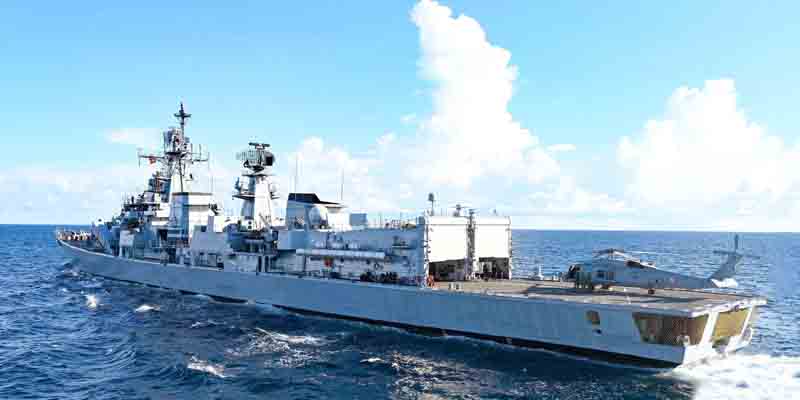- India
- Oct 16
India hosts Malabar Exercise
• The Malabar exercise featuring the navies of India, the US, Australia and Japan began on October 8 in Visakhapatnam with an aim to boost their overall interoperability amid evolving regional security situation.
• This year marks the 28th iteration of the Malabar exercise, which began in 1992 as a bilateral exercise between the United States and India.
• The sea phase of the exercise commenced on October 14 off the coast of Visakhapatnam.
• Naval warships, embarked integral helicopters and long-range maritime patrol aircraft from Australia, India, Japan and the US are now exercising in unison in the Bay of Bengal, demonstrating a high level of collaboration and operational synergy.
• The sea phase will further strengthen interoperability between the participating nations and contribute towards enhancing regional security and stability in the Indo-Pacific.
• Indian, Australian, Japanese, and US maritime forces routinely operate together across the Indo-Pacific in support of regional security and stability.
History of Malabar exercise:
• Malabar is an annual maritime exercise that enhances planning, training and employment of advanced warfare tactics between the Indian Navy (IN), US Navy, Japan Maritime Self-Defense Force (JMSDF) and Royal Australian Navy (RAN) which demonstrates the commitment between like-minded nations to upholding a rules-based maritime order in the Indo-Pacific.
• The Malabar exercise started in 1992 as a bilateral drill between the Indian Navy and the US Navy in the Indian Ocean. Japan became a permanent member of the exercise in 2015.
• Following India’s invitation, Australia participated in the Malabar Exercise in 2020 that effectively made it a drill by all four member nations of the Quad or Quadrilateral coalition. Australia participated in subsequent exercises as well.
• The Malabar exercises enhanced synergy, interoperability and coordination between the four country navies.
What is Quad?
• The Quad, or the Quadrilateral Security Dialogue, is an informal grouping of four countries — Australia, India, Japan and the United States.
• It is a diplomatic partnership of four countries committed to promoting stability, resilience and prosperity in the Indo-Pacific.
• Established in the wake of the 2004 Indian Ocean Tsunami to coordinate humanitarian assistance and disaster relief, the Quad has since become a leading regional partnership dedicated to advancing a common vision of a free and open Indo-Pacific through practical cooperation on diverse 21st-century challenges.
• The foreign ministers of the four countries held their first meeting under the Quad framework in New York in September 2019.
• The first Leaders’ Summit of the Quad was held virtually in March 2021.
• The Quad recognises that international law, peace, and security in the maritime domain underpins the development and prosperity of the Indo-Pacific.
• The countries are determined to deepen engagement with regional partners, including through capacity-building and technical assistance, to strengthen maritime domain awareness, protect their ability to develop offshore resources, consistent with the UN Convention on the Law of the Sea (UNCLOS).
• The Quad is exchanging information on ever-evolving threats and working with Indo-Pacific countries, and in multilateral fora, to counter all forms of terrorism and violent extremism.
• Quad partners champion the free, open, and inclusive rules-based order, rooted in international law, that protects the sovereignty and territorial integrity of regional countries.
• The Quad has been focusing on cooperation in areas such as producing vaccines, connectivity projects, facilitating the mobility of students and looking at promoting startups and technology collaboration.
Manorama Yearbook app is now available on Google Play Store and iOS App Store


